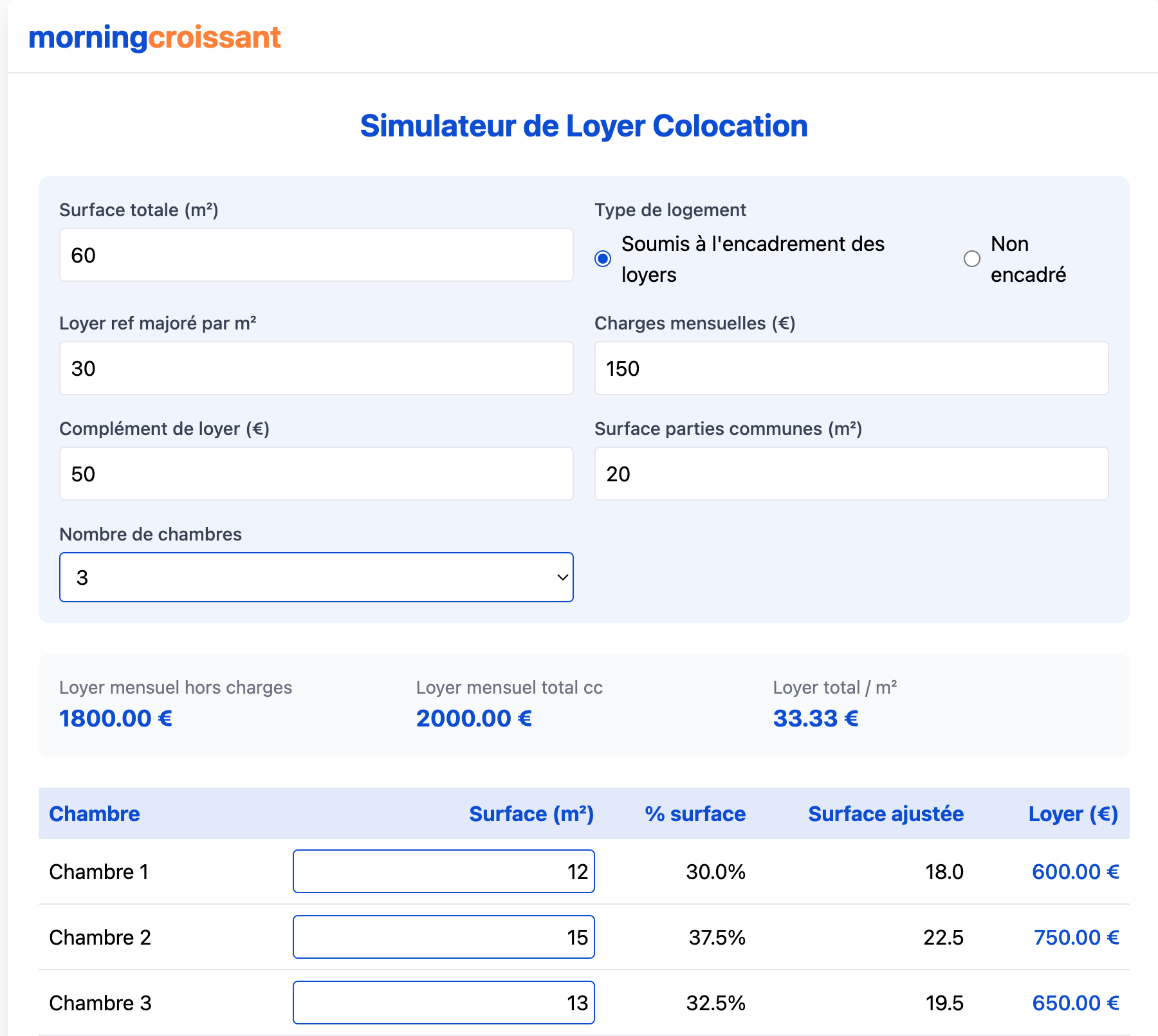
Are you a property owner looking to rent your property as a shared apartment? Fairly distributing rent between rooms is often a real puzzle. Between private space, common areas, and room characteristics, how do you establish a fair price for each room? This article guides you step by step through this process.
Why Distribute Rent Fairly Among Roommates?
Fair rent distribution offers several advantages:
- It reduces tensions between roommates
- It makes your property easier to market
- It improves the occupancy rate
- It decreases the risk of unpaid rent
Methods for Calculating Rent in Shared Accommodations
Method 1: Distribution Proportional to Surface Area
This is the most intuitive method, but it neglects common areas.
Example:
For a 60 m² apartment rented for €2,100 with three bedrooms of 12 m², 16 m², and 15 m²:
- Total bedroom surface area: 12 + 16 + 15 = 43 m²
- Calculating the percentage for each room:
- Room 1: 12/43 = 27.9%
- Room 2: 16/43 = 37.2%
- Room 3: 15/43 = 34.9%
- Rent distribution:
- Room 1: €2,100 × 27.9% = €586
- Room 2: €2,100 × 37.2% = €782
- Room 3: €2,100 × 34.9% = €732
Method 2: Taking Common Areas into Account
This more equitable approach incorporates access to common areas in the calculation.
Example:
Let's return to our 60 m² apartment with three bedrooms:
- Common area surface: 60 - 43 = 17 m²
- Distribution of common areas proportional to private space:
- Room 1: 12 + (17 × 27.9%) = 16.7 m²
- Room 2: 16 + (17 × 37.2%) = 22.3 m²
- Room 3: 15 + (17 × 34.9%) = 21.9 m²
- Rent per m²: €2,100 / 60 = €35/m²
- Rent distribution:
- Room 1: 16.7 × 35 = €584
- Room 2: 22.3 × 35 = €780
- Room 3: 21.9 × 35 = €766
Method 3: Weighting Based on Room Characteristics
This method takes into account qualitative differences between rooms.
Factors to consider:
- Exposure and brightness
- Presence of a balcony or terrace
- Private bathroom
- Sound or thermal insulation
- Built-in storage
To integrate these elements, you can:
- Establish a score out of 10 for each room
- Calculate a weighting coefficient
- Adjust the distribution accordingly
Rent Control Zones: Specific Rules
In cities where rent control applies (Paris, Lille, Lyon, etc.), special rules apply:
- The reference rent applies to the entire accommodation
- Distribution between roommates must respect this overall ceiling
- A rent supplement is possible only for exceptional amenities
Non-compliance with these rules exposes landlords to penalties and requests for rent reduction.
Optimize Your Calculation with Our Simulator
To make your life easier, MorningCroissant has developed a shared apartment rent simulator. This free tool allows you to:
- Automatically calculate the optimal distribution
- Take into account the specific surface area of each room
- Take into account rent control if applicable
- Generate a summary to share
How to use it:
- Enter the total surface area of the accommodation and the rent
- Indicate the surface area of each room
- Indicate the surface area of the shared spaces
- Instantly obtain a balanced distribution
Practical Tips for a Successful Shared Rental
Beyond rent calculation, here are some best practices:
- Transparency: Clearly explain to roommates the calculation method used
- Appropriate lease: Consider either:
- A single lease with a solidarity clause
- Individual leases per room
- Common areas: Ensure functional furnishing proportionate to occupancy
- Equipment: Invest in durable equipment for shared spaces
Conclusion
Fair rent distribution between roommates is essential for a peaceful and sustainable rental. Thanks to our simulator and the methods presented, you now have all the tools to wisely calculate the rent for each room.
Looking to go further in managing your shared rental property? Don't hesitate to contact us to benefit from our expertise.
